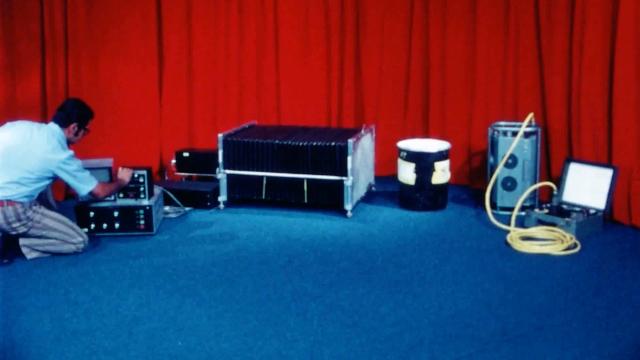Bomb threats have been a part of American life since at least the 19th century. But in the 1970s the types of threats shifted dramatically. The people making bomb threats in the US started to claim their bombs had nuclear materials. By 1975, the US started a new task force to deal with the threats, and we at Gizmodo got our hands on a film that explains what this secret group of nuke-hunting police did.
A screenshot from the newly released 1976 short instructional film “A Response to Nuclear Extortion” released to Gizmodo through a Freedom of Information Act request (National Nuclear Security Administration)
The Department of Energy’s Nuclear Emergency Search Team (NEST) was founded after a number of nuclear threats were made against American cities in the early 1970s, including Los Angeles, New York, and Washington DC. If you haven’t read it already, I highly recommend the book Defusing Armageddon by Jeffrey T. Richelson, which details the history of the secretive group.
What were the threats like? There was the guy in October 1970 who threatened to blow up Orlando if he didn’t get $US1 ($1) million. There was somebody who threatened to destroy Chicago in March 1973. And there was the guy who threatened to explode a nuclear bomb in Boston in May 1974 if he didn’t get $US200,000 ($265,355), among a host of other instances.
All of the threats had varying degrees of seriousness (the guy in Orlando turned out to be a 14-year-old high school kid with no access to nuclear materials, for instance) but the US government decided that there should be a group that could be mobilized to hunt down and assess the credibility of nuclear threats on US soil. So with that, NEST was born.
Even today whenever there’s a terrorist threat against the US involving nuclear material, they’re the ones who will be on the case, coordinating with the FBI and the Department of Homeland Security. But there’s still a lot we don’t know about their work.
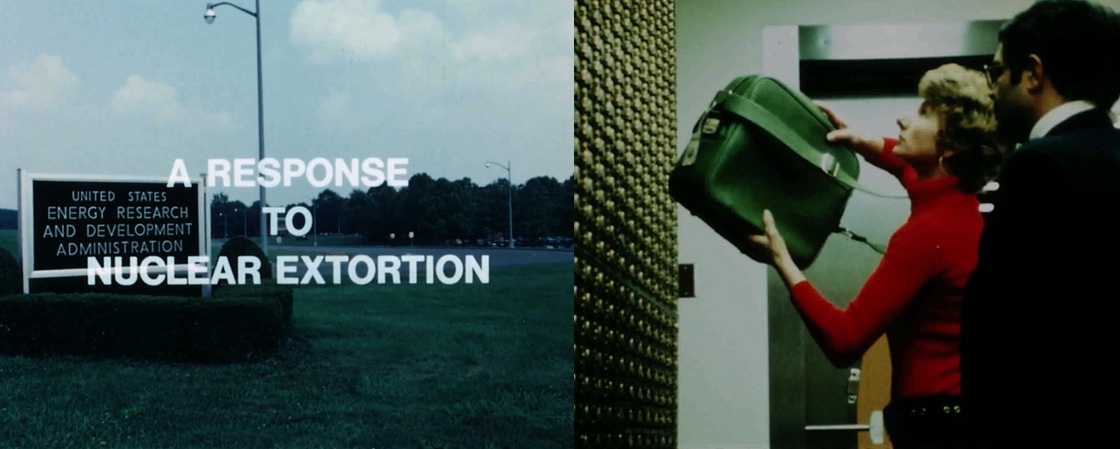
The title slate for the 1976 film “A Response to Nuclear Extortion” (left) and a screenshot from the film showing a woman discreetly checking a bank vault for nuclear threats (National Nuclear Safety Administration)
Gizmodo has obtained a 1976 film titled “A Response to Nuclear Extortion” through a Freedom of Information Act (FOIA) request to the National Nuclear Security Administration (NNSA). The short film is “not exactly Thunderball, but interesting nonetheless,” as Jeffery Richelson, author of Defusing Armageddon, put it to me over email.
While Richelson is correct that it’s not the most riveting film in some respects, it does give us a fascinating peek at a once-secret group that designed all kinds of gadgets and vehicles to make sure the American public had no idea what they were doing.
“I imagine it was aimed at officials who needed to have some understanding of detection process and knowledge of NEST, but not necessarily those with need to know a lot,” said Richelson of the 15-minute movie.
The film begins by explaining that there has become a need for discreet detection of possible nuclear threats in a wide range of public places. If a nuclear threat is made, the suitcase nuclear detection kit perfectly suits their needs.

A screenshot of a covert nuclear threat detection suitcase from the newly released 1976 short instructional film “A Response to Nuclear Extortion” released to Gizmodo through a Freedom of Information Act request (National Nuclear Security Administration)
From the film:
In the interest of public safety in congested areas, nuclear detection instrumentation has been developed to provide low-profile search capability. By packaging the detection equipment in an ordinary briefcase, and transmitting detection information to a small radio receiver carried by the operator, the public never becomes aware that a search is underway.This particular unit meets all the requirements and can be used effectively in public and industrial facilities.
And it wasn’t just suitcases. The team developed equipment that looked like something a maintenance worker might have, vans outfitted with detection equipment, and even helicopters to fly over cities in a hurry.
Also, with the increased commerce in a variety of nuclear materials there is growing concern that there could be a terrorist act involving radioactive material in transport. For this reason, the Communications Center of the Energy Research and Development Administrations offices in Albuquerque maintains a nationwide contact with its shipments. The same communications net provides a link in the emergency response to nuclear incidents.
Nuclear extortion can take a number of forms, and while no such event has yet occurred in the United States, threats have been attempted occasionally. These attempts lend some urgency to the purpose of this film, which is to outline to responsible officials both the nuclear terrorism problem, and the response capability developed by the United States Energy Research and Development Administration.
The film explains that while the FBI takes the lead in the investigative process, the Department of Energy’s team has the expertise to determine whether a terrorist threat is credible and indeed may involve nuclear materials.
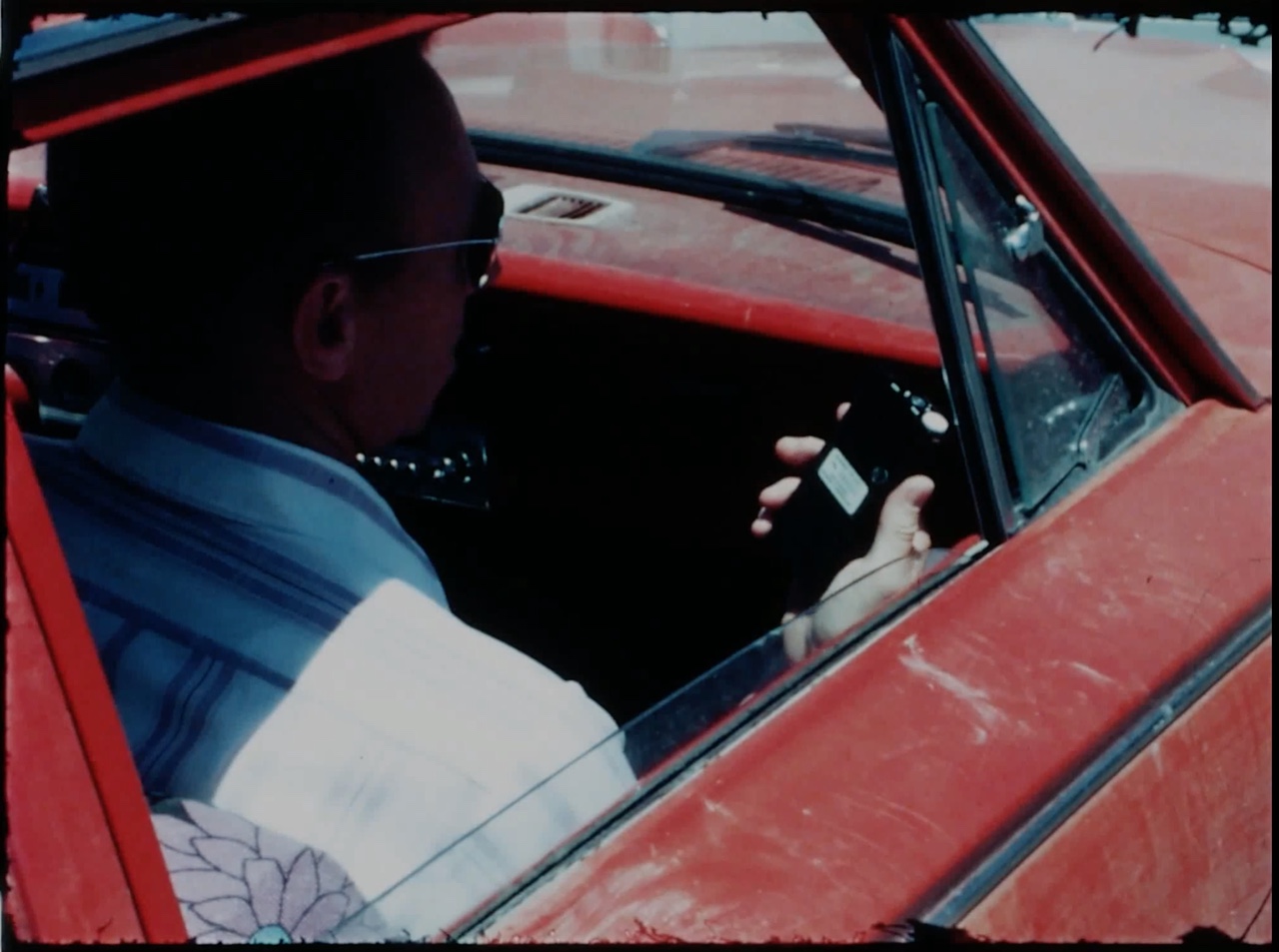
A screenshot of a covert nuclear threat detection operation from the newly released 1976 short instructional film “A Response to Nuclear Extortion” released to Gizmodo through a Freedom of Information Act request (National Nuclear Security Administration)
The film also explains that the tools necessary for responding to nuclear threats were all developed at the team’s different labs in New Mexico and California.
Sophisticated instruments have been designed, built, and tested by the Los Alamos Scientific Laboratory at Los Alamos, New Mexico; Lawrence Livermore Laboratory at Livermore, California; and EG&G Laboratories in Las Vegas, Nevada and Santa Barbara, California.
These instruments operate by the detection of penetrating radiation, which will be present whether the threat involves the dispersion of radioactive material by high explosives, or the detonation of an improvised nuclear bomb.
The film uses animation to explain what their team’s nuclear-detection equipment is looking for.
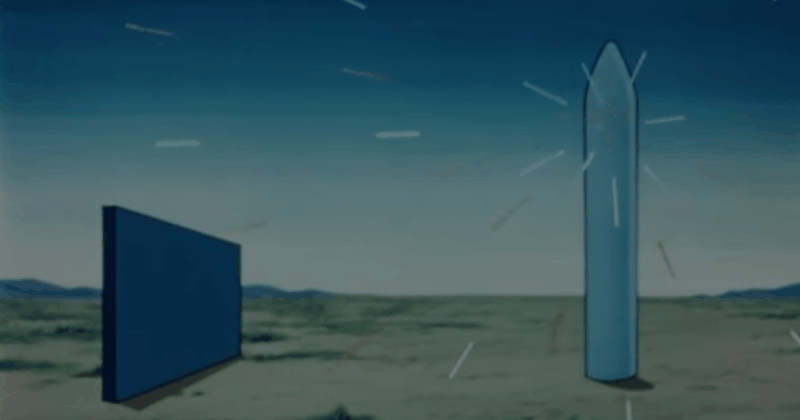
GIF made from the 1976 NEST film “A Response to Nuclear Extortion” obtained by Gizmodo through a FOIA request (National Nuclear Safety Administration)
Consider a nuclear device which contains fissionable material and high explosive. Although there is beta ray, x-ray, and alpha particle activity from within the fissionable material, from outside the assembly we can only detect the more penetrating radiation. Gamma rays, represented by the white lines, and neutrons represented by the yellow lines.
If shielding material is placed between the source and a detector, the amount of radiation reaching a detector would be reduced. Shielding may be a part of the device design, or result from its location within some structure or building, and thus can be a significant factor in the detectability of a nuclear device.
The film goes on to explain how natural and human-made radiation sources can interfere with their equipment, causing considerable difficulty in assessing a true hit.
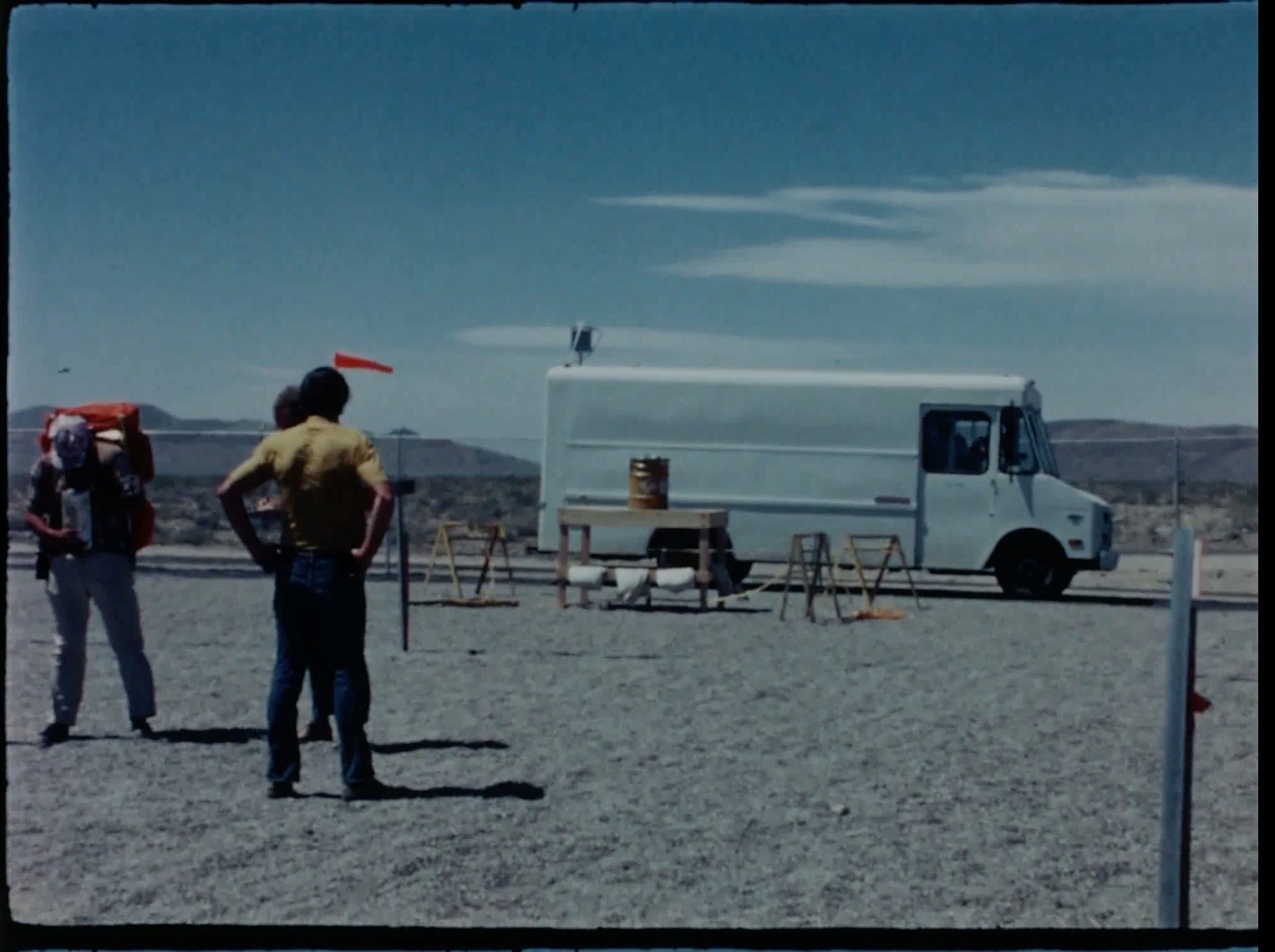
A screenshot of a nuclear threat detection test from the newly released 1976 short instructional film “A Response to Nuclear Extortion” released to Gizmodo through a Freedom of Information Act request (National Nuclear Security Administration)
The narrator also explains the various experiments that are conducted to calibrate equipment, illustrated by vans with detection equipment driving by barrels of radioactive material with different obstacles set up to shield radiation.
Helicopters are also shown and are explained as needing more detectors to give an accurate reading. A man searching an industrial site and a woman inspecting a bank vault are also demonstrated.
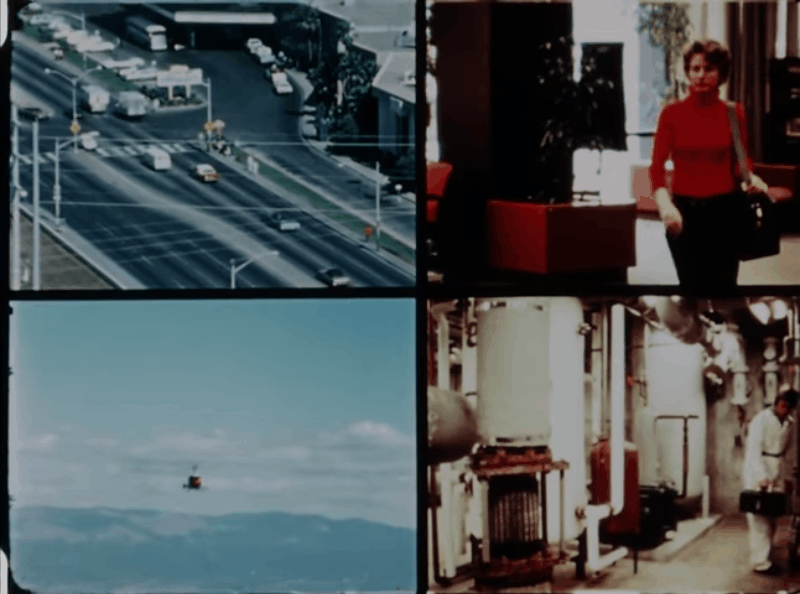
GIF made from the 1976 NEST film “A Response to Nuclear Extortion” obtained by Gizmodo through a FOIA request (National Nuclear Safety Administration)
The film explains that everything from vans to stationary nuclear detectors at roadblocks are used in the hunt for nuclear threats, showing a box sitting on the side of the road. Ironically, if someone saw something like that sitting on the side of the road in the year 2017 I’d imagine that they’d think it was a bomb.
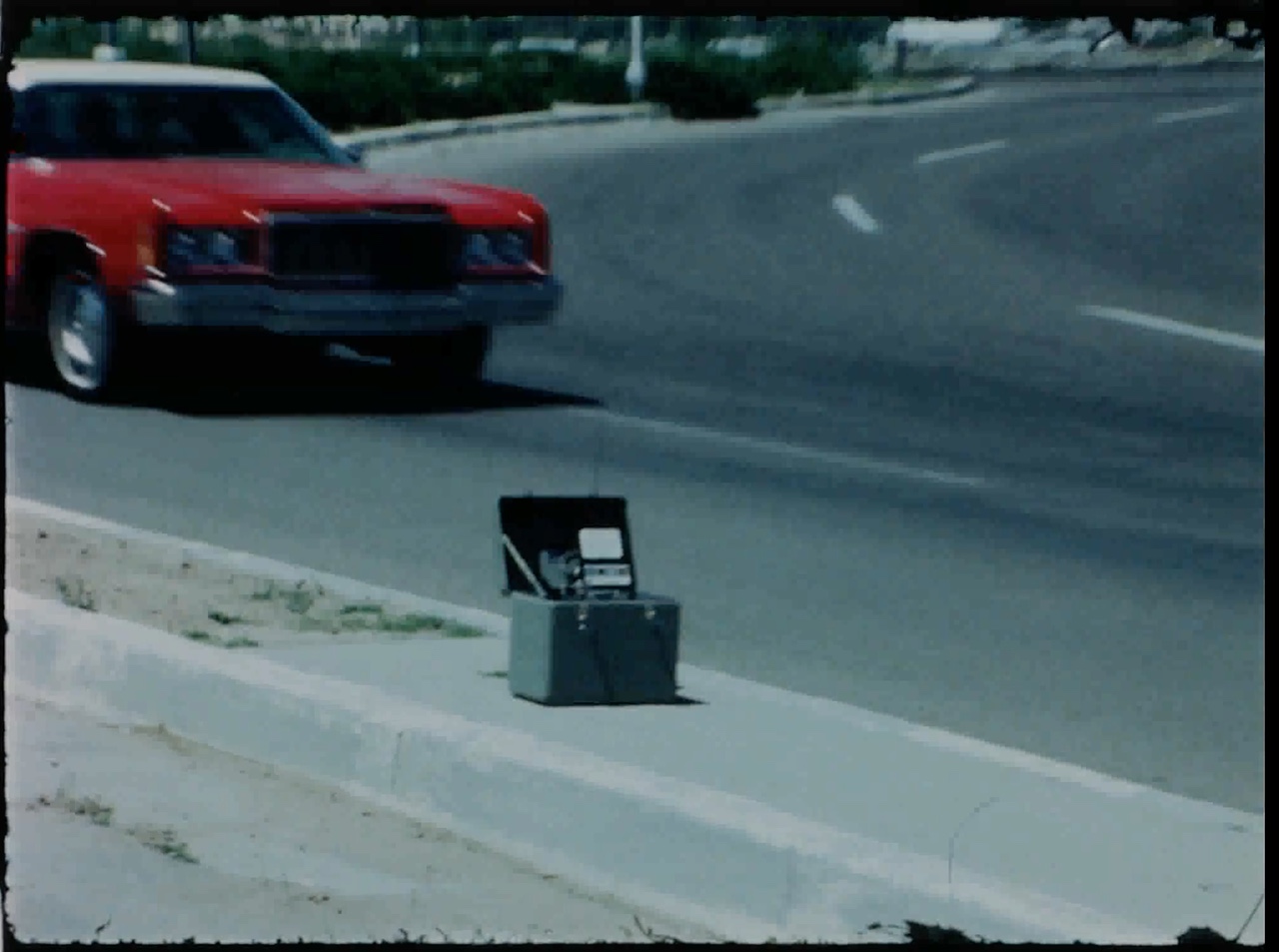
A screenshot of a nuclear threat detection test from the newly released 1976 short instructional film “A Response to Nuclear Extortion” released to Gizmodo through a Freedom of Information Act request (National Nuclear Security Administration)
From 1975 to 1989 there were at least 18 major nuclear threat investigations by the NEST team in cities ranging from Spokane, Washington to Washington, DC. And most were never reported on the evening news. But thankfully, the US still hasn’t been hit with a dirty nuclear bomb.
We’ve uploaded the entire 1976 film to YouTube. As Richelson, it’s no Thunderball. But it’s a fascinating piece of history that’s just been sitting in the National Nuclear Security Administration’s vault.
It’s tough to say what today’s state of the art nuclear detection technologies might look like. That kind of thing is highly classified. But here’s hoping that they have advanced since the 1970s and 80s.
